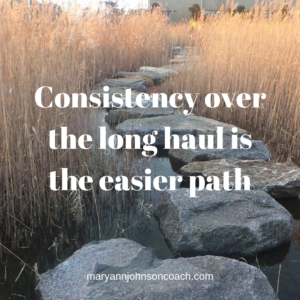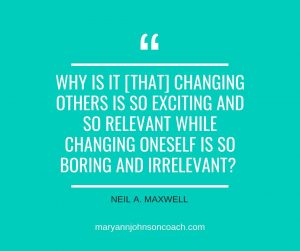 I have the opportunity to talk with women of different ages about many things. It’s one of the perks of my life. This summer, I am sharing ‘A Series of Conversations’ – Articles that have come out of conversations with friends. I’m sure they will be what someone needs to hear, as they have been for me.
I have the opportunity to talk with women of different ages about many things. It’s one of the perks of my life. This summer, I am sharing ‘A Series of Conversations’ – Articles that have come out of conversations with friends. I’m sure they will be what someone needs to hear, as they have been for me.
The information doesn’t come from a place of education or an expert; it comes from women like you and me, with life experience in the trenches.
One of Those Days!
Recently, I had one of those days when I didn’t want to talk with anyone. I was tired and feeling down. I was still carrying the weight of the day before, which was long and chaotic, and the weight of this new day, which would be more of the same. However, on Tuesdays, I walk with my friend Livia. I wanted to cancel but didn’t let myself. I was glad I followed my feelings because my friend, uncharacteristically, was in the same place. We had a good laugh over this unexpected connection. On our walk, we listened to each other, allowed ourselves to feel, and buoyed each other up. It helped us emotionally and mentally prepare for the day and the coming week.
On our walk, we discussed the question we were both dealing with: How do you hang in when things are hard, may stay hard for a while, and may not end as you hope? The answer came in single words and short phrases that have helped us over the years.
Words & Phrases
YET – In our conversation, Livia brought up the word YET. Using this word gives space for thought and growth, and can lead to clarity, and keep us from beating ourselves or others up. For example, “I haven’t learned this yet.” “They haven’t decided yet.” “This isn’t resolved yet.” YET is a powerful word that can help us manage the story we’re telling ourselves and help us have a clearer perspective.
RIGHT NOW – The phrase, Right Now, was the next idea we shared. It can be pivotal when dealing with what you have little control over. For example, “This is what it is for right now.” “Right now, I can do this.” “This is useful to me right now.” “This won’t last forever, but I need a plan for right now.”
As we talked about ‘right now’, we felt this short phrase helped us keep at the forefront of our minds the knowledge that nothing is stagnant, everything grows, and things change, but this is what it is for right now, and we can do it because it won’t stay where it is. Like the word YET, RIGHT NOW helps us manage the story we are carrying and keeps our perspective clearer. Both keep us out of the negative, which is rarely a helpful place to be.
SIMPLE, EASY, FUN, and PRAYER – We are both caregivers, and technology isn’t an issue there. But Livia is a business teacher and life coach, and I am a writer. We use technology, and it keeps changing, like everything else. For example, I know how to use my writing platform right now, but… We did a lot of laughing at this point in the conversation because we both have wanted to bang on our computers or throw our phones against the wall. Here again, the words YET and RIGHT NOW are useful.
When I am in tech trouble, I pray because I know I will see or think of something I have missed. It happens EVERY TIME! It always amazes me when I work something out and don’t even know for sure what I did. Livia told me that when tech is making her crazy, she has a simple mantra she repeats to herself to maintain calm and peaceful while figuring it out: “This is simple, this is easy, this is fun.” She said, “It helps keep the lid on my frustration.” I’ve been giving this a try, and it is helpful, like prayer.
HEARTS- I received a gift from Livia. It isn’t as much about words as it is about looking for the good and seeing the blessings. Years ago, Livia began noticing hearts everywhere. As she and I have walked together over the last year, she has taught me to see them. She says they are her moment-by-moment messages from God, that she is seen, loved, and cared for.
I’ve been looking for hearts for some time now. Recently, I saw a perfect heart in the clouds. There was a bright blue patch, surrounded by clouds, in the shape of a heart. I couldn’t pull over to take a photo, but I had seen it. It had been one of those busy, chaotic mornings, and seeing the heart helped me breathe and smile.
was a bright blue patch, surrounded by clouds, in the shape of a heart. I couldn’t pull over to take a photo, but I had seen it. It had been one of those busy, chaotic mornings, and seeing the heart helped me breathe and smile.
One day, as I pushed my mom’s wheelchair down the street, something I didn’t have time for, but she needed, I saw a perfect heart in a bush. What! How can that be? But there it was, a gift from God for taking time to care for and love another despite my list. Both Livia and I ask to see hearts when we need to lift our spirits, change our perspective, or improve our story. It has become a practice for me, as it has been for Livia for years.
Words Matter!
Life has its hard moments, its hard weeks, months, and sometimes, years. We are often called on missions we didn’t plan on. Sometimes, we need to change course when we would rather not. Things don’t always go our way. But we can use the word YET, the phrase RIGHT NOW, to manage hard things, like technology, by remembering PRAYER, SIMPLE, EASY, and FUN, and look for HEARTS to help us stay centered, happy, and hopeful; a few simple tools to manage big things.
As we practice keeping our perspective clear, as we work on telling ourselves more helpful stories, we can and will live better, more fulfilling lives.
Words matter! They do. Ultimately, all we can control or change is ourselves. We do that best when we find ways (systems) that help us manage the story we tell ourselves, when we keep a handle on our perspective, and as Livia put it, “Keep a lid on frustration.” Staying on top of what we tell ourselves is a practice, and as we get better and more consistent at doing it, life lightens up, even when the circumstances stay the same. This isn’t resolved YET. It is what it is RIGHT NOW. I can manage technology and other hard things as I keep it SIMPLE, believe in EASY, look for the FUN, and see HEARTS. Messages of love, hope, and change are everywhere. : )





 I had few boundaries! There were good reasons that I found myself in this place as a mother; sexual abuse, controlling adults, fear brought on by the cold war, and the upheaval of civil unrest, a belief that I shouldn’t have been born. Life and the future felt uncertain. I had no way to make sense of what was happening in my world and the larger world, no one to talk to about it, and it added to the fear I had held inside since I was a toddler.
I had few boundaries! There were good reasons that I found myself in this place as a mother; sexual abuse, controlling adults, fear brought on by the cold war, and the upheaval of civil unrest, a belief that I shouldn’t have been born. Life and the future felt uncertain. I had no way to make sense of what was happening in my world and the larger world, no one to talk to about it, and it added to the fear I had held inside since I was a toddler. A year ago, I met a relative I didn’t know existed. She is a painter, and I told her about my dream. She painted it for me, and it hangs on my office wall. Every day I repeat the above words out loud, and I look at my painting.
A year ago, I met a relative I didn’t know existed. She is a painter, and I told her about my dream. She painted it for me, and it hangs on my office wall. Every day I repeat the above words out loud, and I look at my painting. So let go of your worry. Do the best you can. Trust yourself and God that you can be whole. Trust your children that they will also do the work we all have to do. Then keep changing and growing. Healing and growing are each of
So let go of your worry. Do the best you can. Trust yourself and God that you can be whole. Trust your children that they will also do the work we all have to do. Then keep changing and growing. Healing and growing are each of 
 Change can be hard. One reason that change is so challenging is that we misunderstand what change actually looks like and we also misunderstand the time that is required for change.
Change can be hard. One reason that change is so challenging is that we misunderstand what change actually looks like and we also misunderstand the time that is required for change.

 A Very Bright Chicken!
A Very Bright Chicken! We have chickens, free-range chickens. That means they are never locked in the coop. That has its advantages and disadvantages!
We have chickens, free-range chickens. That means they are never locked in the coop. That has its advantages and disadvantages! she gets in I watched her. Within minutes I saw her scoot under the fence at the corner where it connects to our neighbor’s fence. I shooed her back out. Then I placed a large rock in front of the low spot.
she gets in I watched her. Within minutes I saw her scoot under the fence at the corner where it connects to our neighbor’s fence. I shooed her back out. Then I placed a large rock in front of the low spot. After I blocked her newest entrance I watched her pace from one end of the garden to the other looking for a way in. I could feel her frustration as she paced back and forth trying this and that.
After I blocked her newest entrance I watched her pace from one end of the garden to the other looking for a way in. I could feel her frustration as she paced back and forth trying this and that. she went back to pacing the fence line, then she veered to the left towards the pasture fence. The fence at the back of the garden is also the fence to the back pasture. It’s made of far different wire than our chicken wire garden fence.
she went back to pacing the fence line, then she veered to the left towards the pasture fence. The fence at the back of the garden is also the fence to the back pasture. It’s made of far different wire than our chicken wire garden fence.